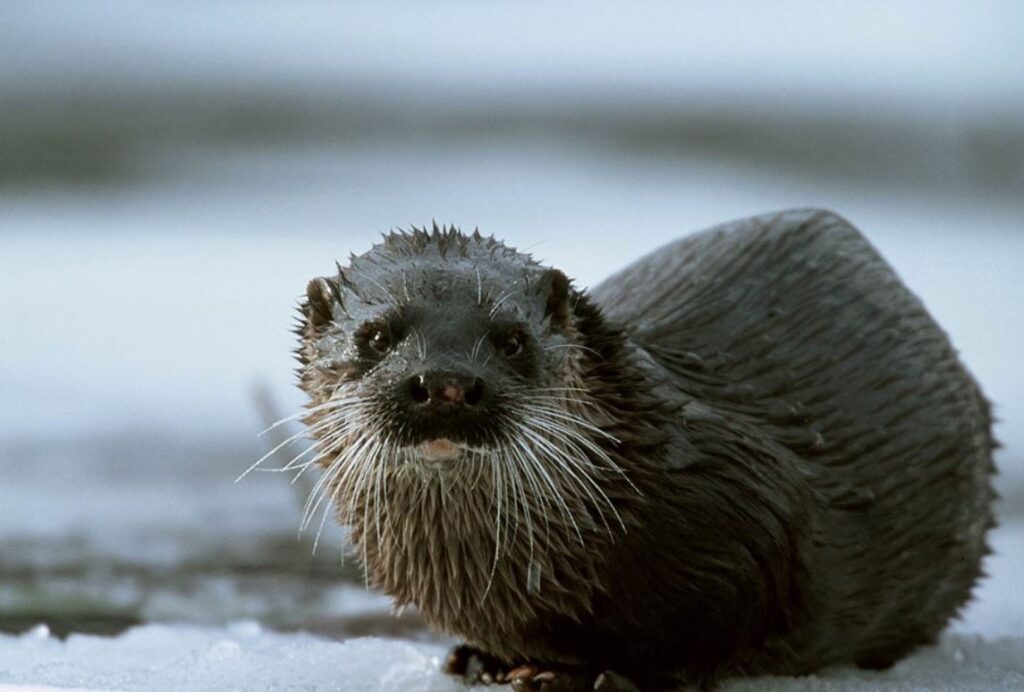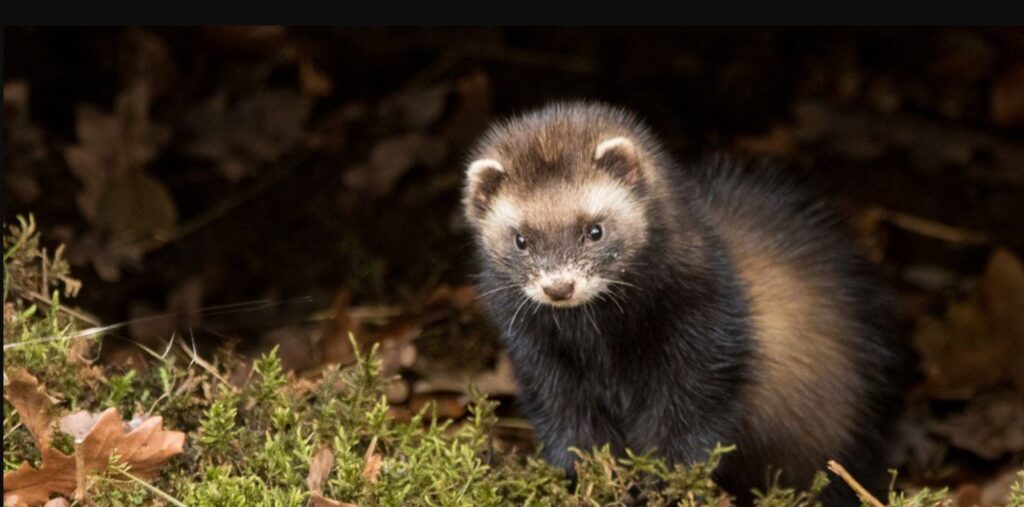HOW DO WE DIFFERENTIATE FERRETS AND OTTERS?
Don’t let their small size fool you. Ferrets and otters are both highly energetic and fiercely territorial mammals. They can be very aggressive. But they are also quite docile when they are not threatened. The ferret, in particular, makes for an ideal household pet. Both ferrets and otters belong to Mustelidae, a family of relatively small carnivores which includes badgers, minks, wolverines, and badgers.
Two of the more recognizable members of the Mustelidae are the ferret and the otter. One island-dwelling, while the other spends most of its time in the water. So, what are the other differences between these two animals?
WHAT ARE THE DIFFERENCES BETWEEN FERRETS AND OTTERS?
1. TAXONOMY – Ferrets ( Mustela putorius furo ) are the domesticated descendants of the European polecat ( Mustela putorius ). They belong to the genus Mustela, along with weasels, ermines, and mink. It is believed that ferrets were domesticated more than 2.000 years ago to help humans hunt small game such as rabbits. In modern history, ferrets are bred and raised primarily as pets.
Otters belong to the genus Lutra. All members of this genus are semi-aquatic. There are thirteen existing otters, from the giant river otter of South America to the small-clawed otter of Southeast Asia.
2. SIZE – Ferrets are small creatures. A full-grown male ferret, or hob, averages about 16 inches in length, from the nose to the tip of its tail. It weighs around 3 pounds. Jills, or female ferrets, reach a maximum average length of 12 inches.
Otters vary in size. The giant otter from South America is about 44 inches in length and 53 pounds in weight when fully grown. On the other hand, small-clawed otters are around 38 inches in length from nose to tail and weigh approximately 12 pounds.

3. APPEARANCE – The ferret shares the same physical traits as weasels, minks, and stoats. It has a long, slender, and streamlined body. A ferret has a cone-shaped head that tips off to a sharp nose. It also has a very long tale in proportion to its body. The tail accounts for about half the total length of the ferret’s body. The color of their fur is usually a varied blend of blacks, whites, and browns; Albino ferrets also exist. Male Ferrets are bigger than females.
Despite the variety in sizes and habitats, otters share the same traits in terms of having slender bodies, short limbs, and webbed feet specialized for navigating bodies of water. They also have muscular tails, which they use to steer and maintain balance while submerged or floating. They have insulated fur beneath a layer of waterproof hair. This inner and outer layer of fur keeps them relatively dry and afloat. This is important because otters frequently sleep while floating on water. Their claws are sharp enough and specialized enough to capture prey such as fish and shellfish.
4. BEHAVIOR – Ferrets sleep throughout the day, waking up and becoming active in the early morning hours and the late afternoon. They are very curious about their surroundings; Ferrets are energetic and playful. This is why ferrets cannot simply be kept in cages for a long time; They will need exercise outside their cage so that they do not become unruly. Although they can be very territorial, ferrets are gregarious. They have no problem adapting to the idea of living with a group of fellow ferrets. Ferrets mark their territory with the scent excreted from glands found near their anus. They also supplement these territorial scents with urine.
Otters tend to be solitary, but they can also form small groups consisting of mating pairs and their offspring. Some otter species are mostly solitary and become protective of their spots. Otters mark their territories with their dung, called spraints. They are visual and scent-based cues. Otters will deposit them in visible areas that define the boundaries of their hunting spots. Spraints also have strong smells. When they are not feeding or sleeping, otters spend a portion of their day grooming their fur and insulated hair with their sharp claws. They do this to maintain the layer of insulating oil, keep off debris and parasites, and keep their fur healthy.
5. HABITAT – Ferrets are the descendants of polecats that are native to Eurasia and North Africa. Modern-day ferrets are mostly sourced from pet shops and taken in as pets. Because ferrets are bred and raised as household pets, they are rarely found in the wild. They spend almost their entire lives in cages equipped with various platforms for exercise and play. Ferrets that have become used to being pets do not survive for long if they are let out in the wild. However, there are cases when domesticated ferrets interbreed with wild polecats, resulting in feral hybrids. True to their Mustelid lineage, feral ferrets prefer large grassy areas with loose soil where they can tunnel. Being predators, it is also common for them to take over the caves and tunnels dug up by other subterranean creatures. When ferrets were first domesticated, they were used to track and chase rabbits down their caves and prey on them.
Otters thrive in habitats that contain bodies of water. Depending on the species, otters can live in either freshwater or saltwater. Some otters dwell in and along rivers, marshlands, estuaries, wet farmlands, and coastal areas. Otters are semi-aquatic, spending their lives on land and in water. But they never venture far away from bodies of water. The sea otter is unique in the sense that it rarely leaves the ocean. It even prefers to sleep in a bed of kelp instead of digging a den on dry land.
6. DIET – Although ferrets have been living alongside humans for thousands of years, it is still strictly a predator and a carnivore. Feral hybrid ferrets will hunt and eat prey that is larger than them. These hybrid ferrets can be very destructive to livestock. They will eat meat, connective tissue, and bone. On occasion, they will also eat partially digested matter in the stomach and intestine of their prey. In a domesticated setting, ferrets have to feed a consistent diet of meat or meat-based products. They need significant amounts of protein and fat to sustain their kinetic lifestyle.
Otters mainly subsist on fish. In the case of freshwater and river otters, they may expand their dietary range to include shellfish, water-dwelling invertebrates, frogs, rodents, birds, eggs, and even rabbits. Sea otters hunt along the sea bed for crabs, sea urchins: clams, sea snails, and other bottom feeders. Otters have been known to use tools when eating. When they hunt for clams or other prey with hard shells, otters would float on their back and use rocks to smash shells so that they can pick and eat the soft meat.
Questions and Answers
CAN OTTERS BE DOMESTICATED AS PETS?
Otters are extremely difficult to domesticate. They might appear cute and cuddly, but it is important to remember that they are predators. In the wild, they tend to avoid interacting with humans. But when that they are cornered, they can attack with their sharp teeth and muscular tails. They are very active, and they do not respond well when their personal space is invaded. They will tear apart furniture, couches, and everything in their path when they become anxious.
In addition, they frequently give off an undesirable odor. This is because otters instinctively use their feces and their urine to mark their spaces and territories. This marking instinct is the main reason why it takes a lot of time and effort to train otters to use litter boxes. Otters naturally prefer large and open spaces. Keeping them in cramped areas can cause them to become highly irritable and aggressive.
In Asia, particularly in Japan, Indonesia, and Thailand, otters are increasingly being sought after as exotic pets. In most areas, owning such wild animals is illegal. But authorities are cracking down on the capture and trade of otters.
WHY WAS THE FERRET DOMESTICATED?
Ferrets were domesticated more than 2.000 years ago from the polecat. They were not trained to be house companions. They were first tamed to assist hunters in capturing small prey. Ferrets are naturally curious, energetic, and persistent carnivores–ideal traits for a hunting animal. In addition, they are swift and agile and possess small and long bodies, enabling them to keep pace with rabbits and small rodents. They will chase their prey straight down tunnels and dens. The expression “to ferret out”, references just how effective ferrets are as hunters. Interestingly, the name “ferret” comes from the Latin “furritus”, which means “little thief.” That alone gives us an idea about the behavior of ferrets.
Ferrets eventually transitioned from hunting companions to household pets. Due to their small size, they are ideal pets for people who do not have the necessary space for dogs or cats. They respond well to human interaction. They are very playful. In addition, they can be house trained like cats and dogs.
HOW DO OTTERS SURVIVE IN WATER?
Otters are among the few biologically specialized mammals to thrive in water, along with seals and whales. They can hold their breath for an extended period. They can also seal their eyes and ears when they dive to great depths to hunt.
CAN FERRETS SURVIVE IN THE WILD?
No, pure ferrets cannot survive in the wild for long. Only ferret-pole cat hybrids are capable of adjusting to a wild environment. However, there is a variety of ferrets that is naturally found in the wild. This is the black-footed ferret.

